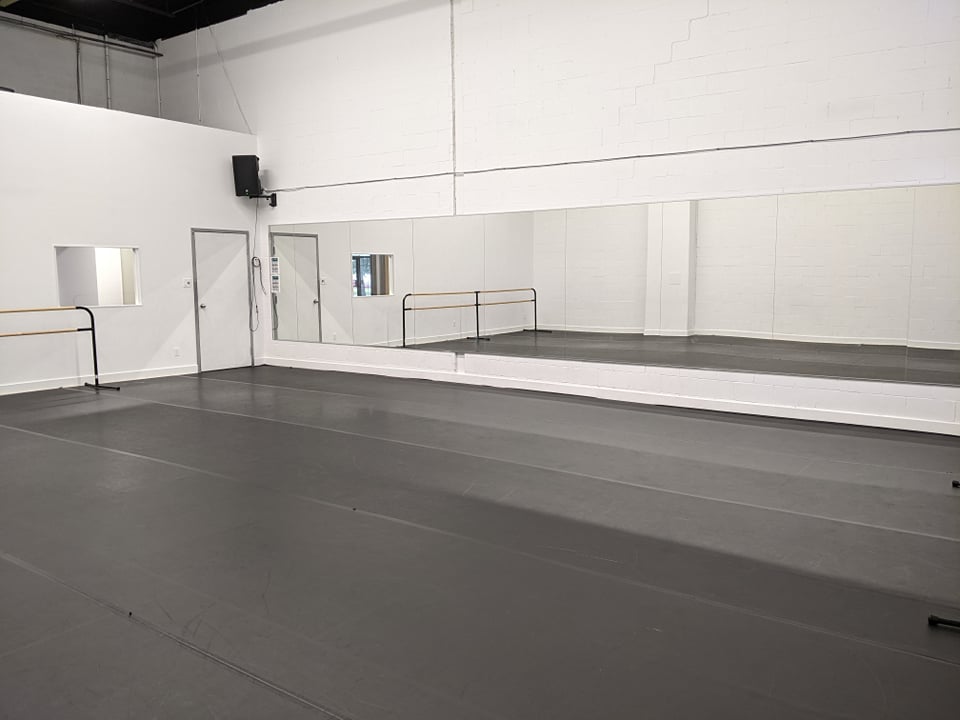This article is published through our Regional Reporter Program. We acknowledge the support of the Canada Council for the Arts through the Digital Now initiative.
A new professional-level school was announced last week in Dorval, Que., with a focus on training dancers for both commercial and artistic dance industries. The institution’s first cohort starts this September.
The École nationale de danse du Canada was founded by Sonia Clarke, principal and artistic director, and will launch with a faculty of recognized artists and teachers across the industry including François Pruneau (So You Think You Can Dance Canada), Julie Dombrowski (America’s Best Dance Crew), Nedge “Black Kat” (Maison Imperial de Waacking), Hélène Lemay (Cirque du Soleil) and Sandy Silva (Migration Dance Film Project).
Clarke created the school in response to a need she saw among advanced dancers in Quebec seeking a versatile professional dance education. She noticed they often left the province or country to find the variety of styles and training they needed.
“I have students who’ve asked me, ‘What do I do now?’ And often I’d have to say, ‘Well, you’re going to have to move to the States,’ ” she said.
There are several options in Quebec, ranging from university and college programs in contemporary dance interpretation and choreography to conservatory-style training in ballet. For Clarke, these choices are good options but too narrow.
“If you want to be able to do more things or something different, you don’t have that option,” she said.
Beyond different styles and techniques, the program will also focus on career management skills including injury prevention, CV and grant writing and learning how to present oneself online, live and in front of a camera.

In conceptualizing and founding the school, Clarke and her collaborators, Véronique Sevigny-Leclerc, Lisa-Marie Villeneuve and Christine Langston, also identified the need to demystify the transition to a professional career through discussions with professionals.
“Especially when we’re talking about street dancers,” said Clarke, “how do you navigate from battles to a professional dance career? Same thing for a lot of kids who are in competition.”
Clara Chemtov grew up dancing in Montreal and is now finishing her first year studying dance at York University. As a dance student, she sees the value in a more versatile education. She also believes that versatility is about diversity.
She said she learned this past year that dance as an institution is “pretty Eurocentric and colonial,” making her curious for other perspectives.
“I’m more interested in learning styles that aren’t completely whitewashed,” she said.
Though she is primarily focused on contemporary dance, learning a variety of styles, for her, is also a way to connect to the reality of the professional world.
“I think it’s important to receive training from all different kinds of people in all different kinds of styles if we want to be prepared to work with the professionals that are actually out there,” she said.
Hannah Surette grew up primarily dancing ballet, jazz and modern styles and is now in her last year in dance at Cégep de Saint-Laurent. For her, exploring other styles is an artistic necessity.
“In my opinion, the biggest thing no matter what role you occupy in the dance world is creativity and open-mindedness,” she said. “In terms of expanding both of those things, it’s really important to not stay in the same realm.”
Her current program focuses on contemporary techniques rooted in the same styles she grew up with and was one of few post-secondary education options close to home.

Kim Gingras is a board member and ambassador for École nationale de danse du Canada. She has danced with Beyoncé, Jennifer Lopez, Dua Lipa and more. She said she immediately recognized herself in the program.
“I believe, obviously, versatility is a great tool to have no matter where you are going,” she said. “I feel like, damn, where was that when I was growing up?”
She also believes that the school’s focus on versatility in technique and across commercial and artistic industries provides an answer to some of the uncertainties young dancers face.
“There’s so much that we can do, which is exciting but also scary,” she said. “I think a lot of dancers will really benefit from taking this program if they’re not sure where they want to head.”
Tagged:





